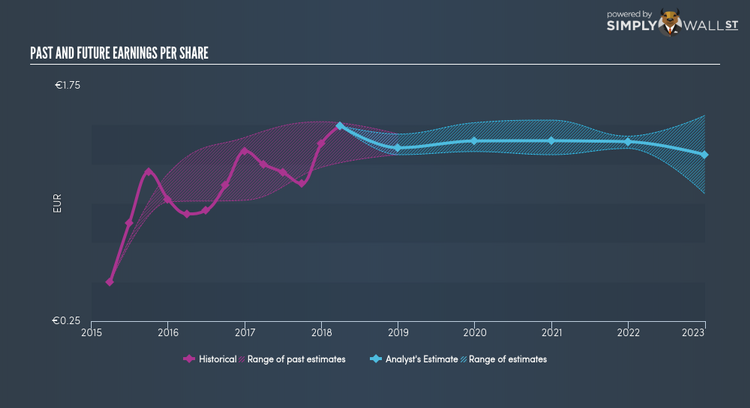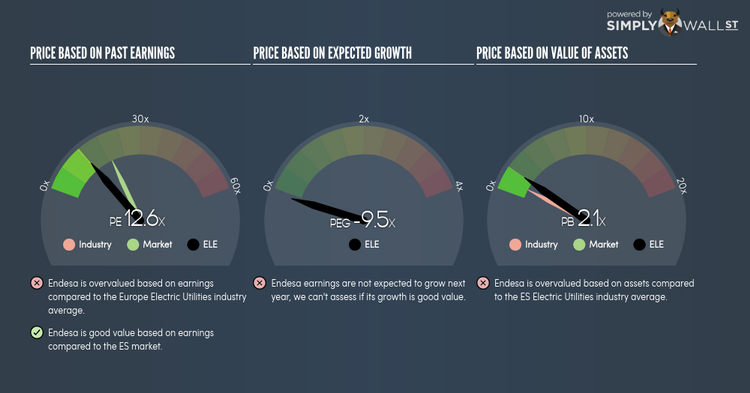How Does Endesa SA. (BME:ELE) Compare To The Utilities Sector?

Endesa SA. (BME:ELE), a €20.17B large-cap, is a utility company operating in an industry which has experienced a host of challenges, including the ongoing maintenance of assets, and increased desire by consumers for energy management and conservation. Utilities analysts are forecasting for the entire industry, negative growth in the upcoming year , and a low 4.33% growth over the next couple of years. This rate is below the growth rate of the ES stock market as a whole. Today, I will analyse the industry outlook, as well as evaluate whether Endesa is lagging or leading its competitors in the industry. View our latest analysis for Endesa
What’s the catalyst for Endesa’s sector growth?
Going forward, utility companies face the threat of new entrants and disruptive technologies, growth in renewable generation, and aging assets, just to name a few. In the previous year, the industry saw growth of 7.96%, though still underperforming the wider ES stock market. Endesa leads the pack with its impressive earnings growth of 19.67% over the past year. However, analysts are not expecting this industry-beating trend to continue, with future growth expected to be -8.66% compared to the wider utilities sector growth hovering next year.
Is Endesa and the sector relatively cheap?
Electric utility companies are typically trading at a PE of 13.26x, below the broader ES stock market PE of 19.22x. This illustrates a somewhat under-priced sector compared to the rest of the market. Though, the industry did returned a lower 8.70% compared to the market’s 11.48%, which may explain the lower relative valuation. On the stock-level, Endesa is trading at a PE ratio of 12.61x, which is relatively in-line with the average electric utilities stock. In terms of returns, Endesa generated 16.55% in the past year, which is 7.85% over the utilities sector.
Next Steps:
If Endesa has been on your watchlist for a while, now may not be the best time to enter into the stock. The company is an utilities industry laggard in terms of its future growth outlook, and is trading relatively in-line with its peers. If growth and mispricing are important aspects for your investment thesis, there may be better investments in the utilities sector. However, before you make a decision on the stock, I suggest you look at Endesa’s fundamentals in order to build a holistic investment thesis.
Financial Health: Does it have a healthy balance sheet? Take a look at our free balance sheet analysis with six simple checks on key factors like leverage and risk.
Historical Track Record: What has ELE’s performance been like over the past? Go into more detail in the past track record analysis and take a look at the free visual representations of our analysis for more clarity.
Other High-Growth Alternatives : Are there other high-growth stocks you could be holding instead of Endesa? Explore our interactive list of stocks with large growth potential to get an idea of what else is out there you may be missing!
To help readers see pass the short term volatility of the financial market, we aim to bring you a long-term focused research analysis purely driven by fundamental data. Note that our analysis does not factor in the latest price sensitive company announcements.
The author is an independent contributor and at the time of publication had no position in the stocks mentioned.

 Yahoo Finance
Yahoo Finance 

